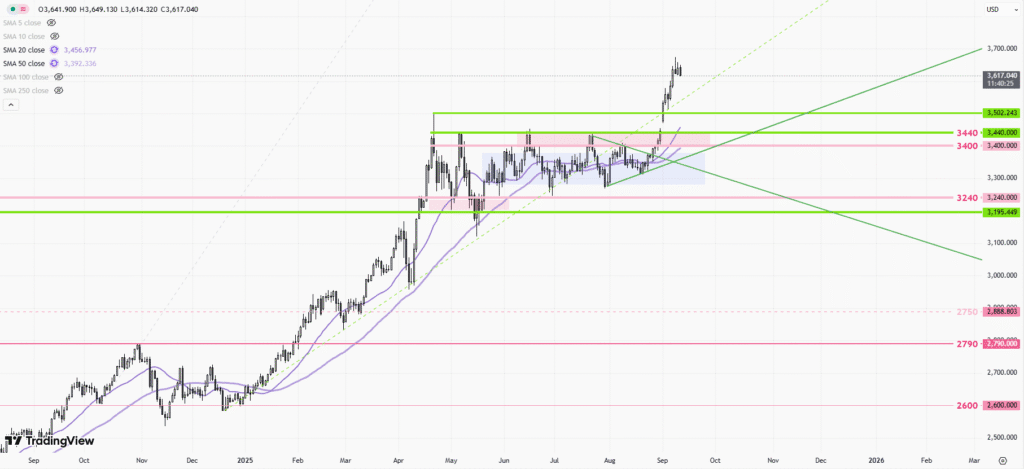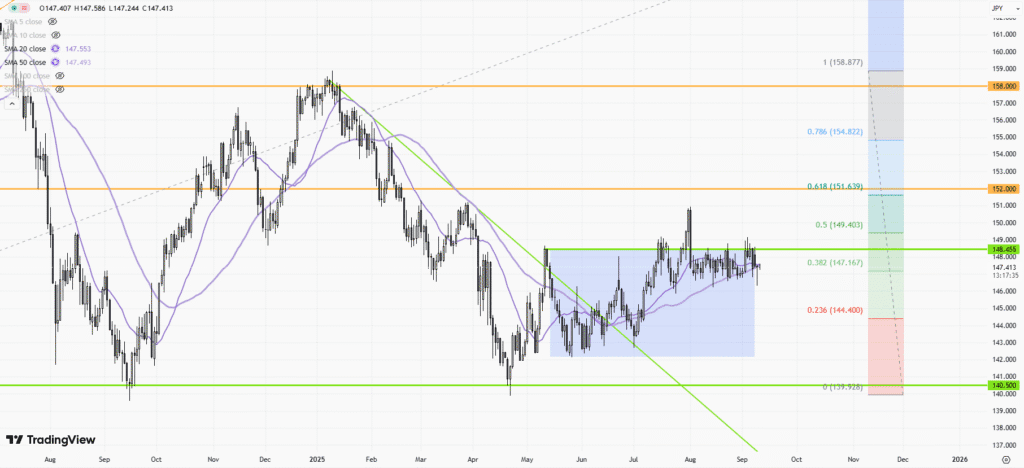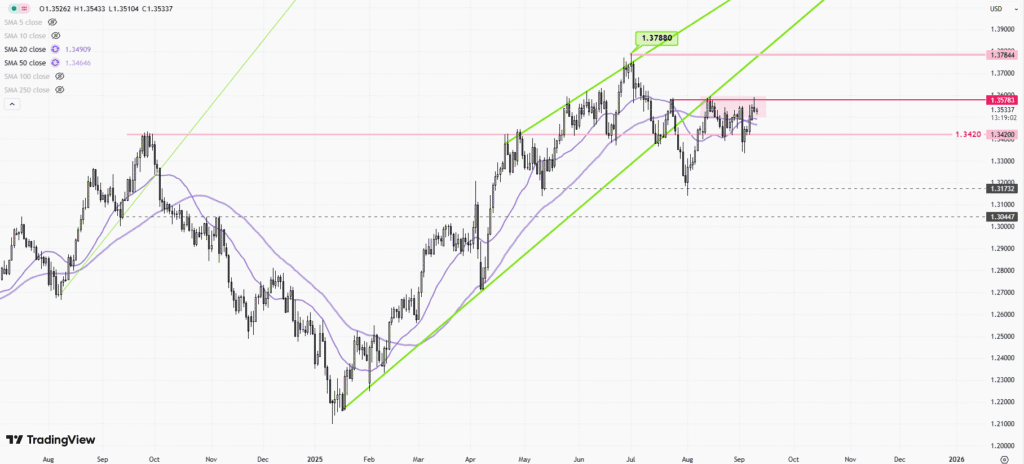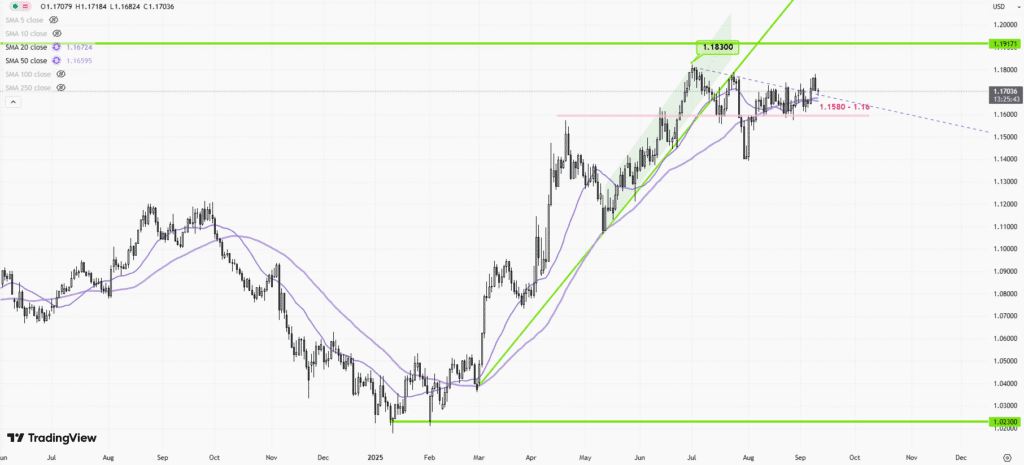 |
| Gold V.1.3.1 signal Telegram Channel (English) |

Gold Price Forecast 2025: Navigating Volatility and Long-Term Growth Amid Fed Policy and Global Uncertainty
2025-09-19 @ 01:00
Gold Price Forecast: Navigating Volatility in the Fed’s Aftermath
Gold prices have encountered a nuanced journey in 2025, shaped by dynamic macroeconomic factors and central bank decisions. As of mid-September, gold has experienced a moderate pullback, yet its long-term momentum remains intact. This article explores the current price action, underlying drivers, and where gold might be headed through the end of the year and beyond.
Current State of Gold
In September 2025, gold dipped slightly, trading near $3,645 per ounce—a modest decline from the previous day. However, zooming out reveals a different story: gold prices have surged nearly 10% over the past month and more than 40% from a year ago. This strong performance demonstrates gold’s enduring appeal as a hedge during uncertain times and underscores its sensitivity to global economic trends.
Impact of the Fed’s Policy
The Federal Reserve’s monetary policy continues to cast a long shadow on gold markets. Recent signals suggest the Fed remains cautious, prioritizing inflation control, which has contributed to short-term volatility for gold. Rate hikes tend to make non-yielding assets like gold less attractive, causing immediate price fluctuations. However, persistent concerns about inflation and geopolitical instability ensure gold retains its strategic importance for investors with a long-term horizon.
Market Sentiment and Technical Outlook
Despite temporary setbacks, sentiment in the gold market is broadly neutral to bullish. The technical indicators are compelling:
- The 50-Day Simple Moving Average (SMA) stands at $3,442.50, well below the current price, indicating positive momentum.
- The 200-Day SMA, at $3,287.41, further highlights gold’s upward trajectory over recent months.
- Gold’s Relative Strength Index (RSI) is elevated, pointing to a potentially overbought market in the short term but not ruling out further gains.
Short-Term Projections
Over the next week, algorithms and analysts foresee mild increases in gold prices, projecting values to reach approximately $3,676 by late September. This suggests small day-to-day gains are likely, supported by underlying demand and ongoing macroeconomic uncertainty.
Looking toward December 2025, forecasts suggest that investors could see substantial returns. Historical data and current models indicate potential profits, with gold projected to approach $3,800 per ounce by year-end—yielding a prospective return of around 20%.
Long-Term Price Targets
Looking beyond the immediate horizon, institutional forecasts present a wide range of targets. Several major banks have raised their gold price expectations for 2025:
- Goldman Sachs: $3,700 per ounce
- J.P. Morgan: $3,675 per ounce
- Bank of America, UBS, Société Générale: Around $3,500 per ounce
- OCBC Bank: $3,900 per ounce
- ANZ: $3,600 per ounce
Most forecasts converge in the $3,300 to $3,900 range, supported by strong fundamentals and continued global uncertainty. Into 2026 and beyond, the bullish trend is expected to continue, with some predictions extrapolating prices near $4,200 in 2026 and possibly exceeding $5,000 by 2030.
Key Drivers for Gold’s Performance
Several interconnected factors underpin gold’s strength:
- Inflation: Heightened inflation expectations make gold more attractive as a hedge.
- Currency Dynamics: Ongoing instability in major world currencies contributes to gold’s appeal.
- Futures Market Activity: Increasing futures volume and open interest signal strong participation from both institutional and retail investors.
- Geopolitical Risks: Escalating tensions and global instability often drive safe-haven demand for gold.
- Supply Constraints: Annual supply inflation of gold—approximately 2,500 to 3,500 metric tonnes—creates ongoing upward pressure.
What Should Investors Watch For?
Volatility will remain a feature of the gold market in the months ahead. Investors should monitor key indicators like inflation trends, central bank actions, currency movements, and ongoing geopolitical developments. Technical metrics such as moving averages and RSI will continue to assist in identifying entry and exit points.
For those seeking portfolio protection or long-term appreciation, gold remains a compelling choice. Whether held directly or via financial instruments, its role as a store of value, inflation hedge, and geopolitical risk mitigator is likely to persist through 2025 and beyond.
Conclusion
Gold finds itself at a crossroads—down slightly in the short term, but underpinned by strong long-term fundamentals. Analysts remain optimistic, with consensus forecasts signaling continued appreciation. While short-term volatility is inevitable, the broader outlook for gold is bullish, offering investors both resilience and potential for growth amid global uncertainty.
For those navigating financial markets, keeping an eye on gold’s evolving narrative will be essential in the months and years to come.








